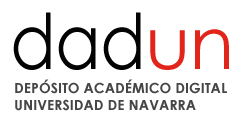Pharmacokinetics of ivermectin metabolites and their activity against Anopheles stephensi mosquitoes
Keywords:
Plasmodium parasites
Malaria
Anopheles mosquitoes
Note:
This article is licensed under a Creative Commons Attribution 4.0 International License, which
permits use, sharing, adaptation, distribution and reproduction in any medium or format, as long as you give appropriate credit to the
original author(s) and the source, provide a link to the Creative Commons licence, and indicate if changes were made. The images or
other third party material in this article are included in the article’s Creative Commons licence, unless indicated otherwise in a credit line
to the material. If material is not included in the article’s Creative Commons licence and your intended use is not permitted by statutory
regulation or exceeds the permitted use, you will need to obtain permission directly from the copyright holder. To view a copy of this
licence, visit http://creativecommons.org/licenses/by/4.0/. The Creative Commons Public Domain Dedication waiver (http://creativeco
mmons.org/publicdomain/zero/1.0/) applies to the data made available in this article, unless otherwise stated in a credit line to the data.
Citation:
Kern, C.; Muller, P.; Chaccour-Diaz, C. (Carlos Javier); et al. "Pharmacokinetics of ivermectin metabolites and their activity against Anopheles stephensi mosquitoes". Malaria Journal. 22 (1), 2023, 194
Statistics and impact
0 citas en

0 citas en

Items in Dadun are protected by copyright, with all rights reserved, unless otherwise indicated.







